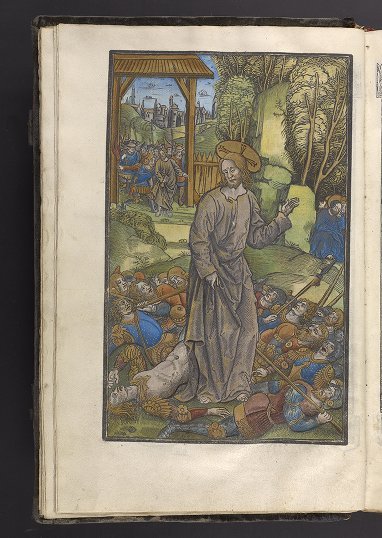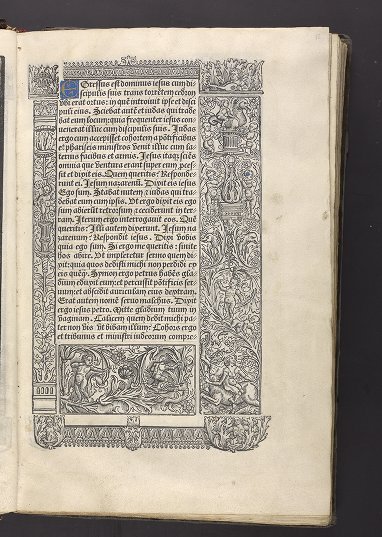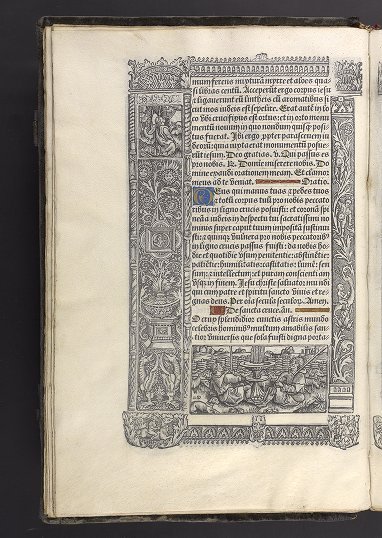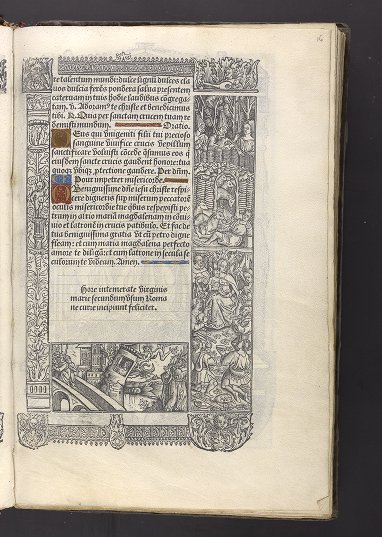You may be thinking, “wait this isn’t a manuscript!”, but often in the early days of the printed boo
You may be thinking, “wait this isn’t a manuscript!”, but often in the early days of the printed book, the distinction between printing and illumination was not so cut and dry. Ms. Codex 1531, with fols. 11v to 12r and 15v to 16r shown here, is a hybrid Book of Hours, for use of Rome, printed ca. 1507 in Paris by Guillaume Anabat for Gilles and Germain Hardouyn. This book is additionally extensively illustrated by Jean Pichore and his workshop with a series of full-page metal cuts (two fully illuminated with color and gold) and borders (printed from a combination of woodcuts and metal cuts) on every text page. Illuminated initials and line-fillers appear throughout the printed pages. The colored metal cut on folio 11v of Jesus being seized at Gethsemane is the perfect example of the transitional moment between printing and illumination.Book description and digitized images can be found on Penn in Hand; http://hdl.library.upenn.edu/1017/d/medren/4495986 -- source link
Tumblr Blog : upennmanuscripts.tumblr.com
#16th century#early printing#manuscripts#ms codex 1531#guilaume anabat#giles hardouyn#germain hardouyn#jean pichore#twiter#facebok



